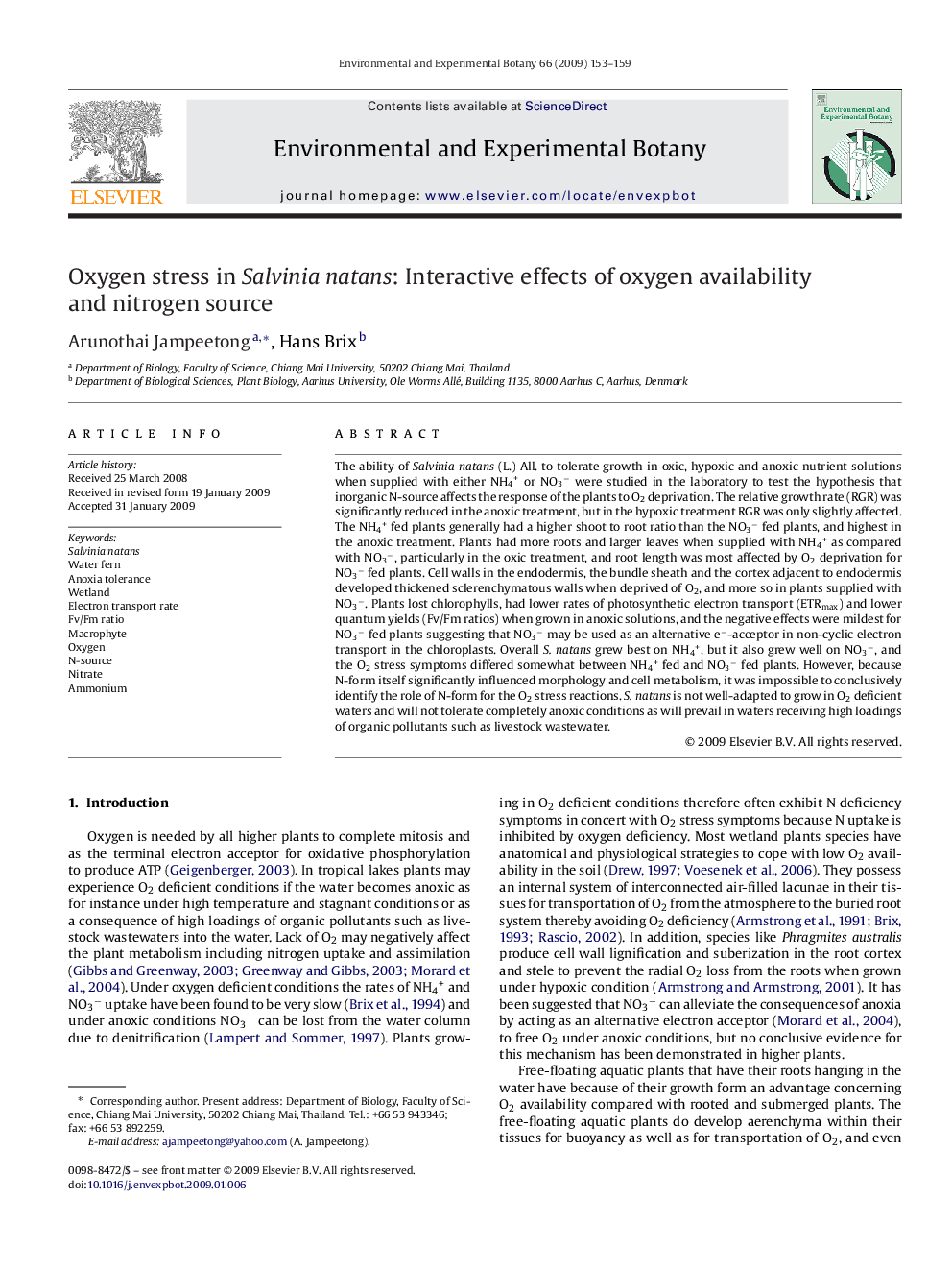| Article ID | Journal | Published Year | Pages | File Type |
|---|---|---|---|---|
| 4555108 | Environmental and Experimental Botany | 2009 | 7 Pages |
The ability of Salvinia natans (L.) All. to tolerate growth in oxic, hypoxic and anoxic nutrient solutions when supplied with either NH4+ or NO3− were studied in the laboratory to test the hypothesis that inorganic N-source affects the response of the plants to O2 deprivation. The relative growth rate (RGR) was significantly reduced in the anoxic treatment, but in the hypoxic treatment RGR was only slightly affected. The NH4+ fed plants generally had a higher shoot to root ratio than the NO3− fed plants, and highest in the anoxic treatment. Plants had more roots and larger leaves when supplied with NH4+ as compared with NO3−, particularly in the oxic treatment, and root length was most affected by O2 deprivation for NO3− fed plants. Cell walls in the endodermis, the bundle sheath and the cortex adjacent to endodermis developed thickened sclerenchymatous walls when deprived of O2, and more so in plants supplied with NO3−. Plants lost chlorophylls, had lower rates of photosynthetic electron transport (ETRmax) and lower quantum yields (Fv/Fm ratios) when grown in anoxic solutions, and the negative effects were mildest for NO3− fed plants suggesting that NO3− may be used as an alternative e−-acceptor in non-cyclic electron transport in the chloroplasts. Overall S. natans grew best on NH4+, but it also grew well on NO3−, and the O2 stress symptoms differed somewhat between NH4+ fed and NO3− fed plants. However, because N-form itself significantly influenced morphology and cell metabolism, it was impossible to conclusively identify the role of N-form for the O2 stress reactions. S. natans is not well-adapted to grow in O2 deficient waters and will not tolerate completely anoxic conditions as will prevail in waters receiving high loadings of organic pollutants such as livestock wastewater.
